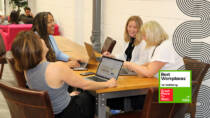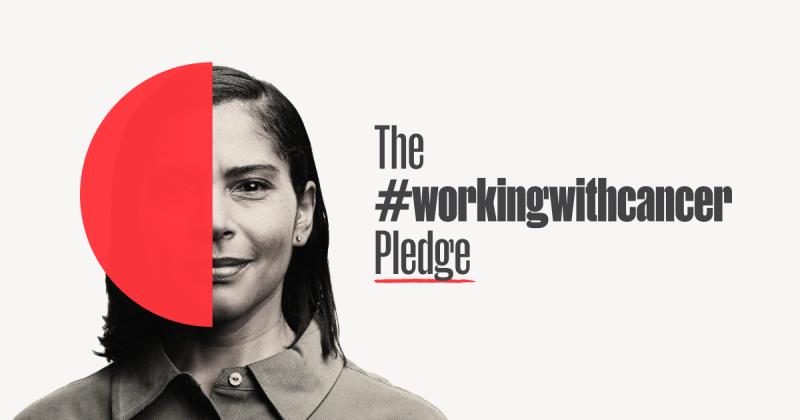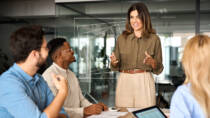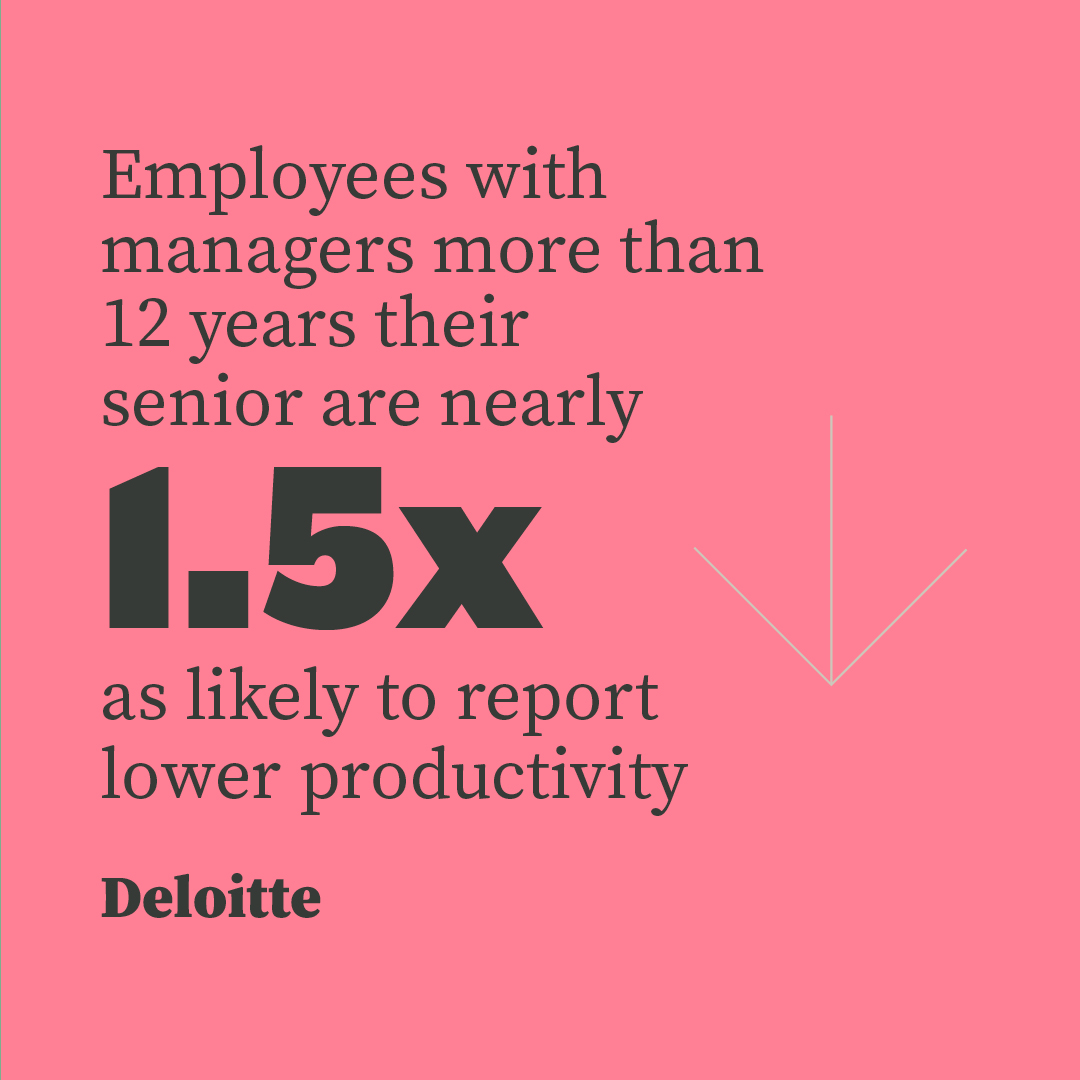Creating a culture of wellbeing
By Sally Pritchett
CEO
In this article, Sally Pritchett, our CEO, shares the initiatives that have helped us foster a culture of wellbeing, recently recognised by Great Place to Work.
We are thrilled that Something Big has once again been recognised by Great Place to Work as one of the UK’s Best Workplaces for Wellbeing this year. Wellbeing is not something we take for granted or just a box we tick once and move on from. On the contrary, we recognize the fragility of health and wellbeing and understand that it requires ongoing attention.
Here’s a brief overview of what we’ve been doing to take care of ourselves over the past year:
Physical wellbeing
Given our employees’ largely sedentary roles and the increase in remote work, it wasn’t surprising when our employee surveys revealed a decline in physical activity levels. We know that this is a challenge many businesses are facing, with one in four people in England doing less than 30 minutes of physical activity a week.
Of course, it’s not for employers to dictate their employees’ lifestyles. However, if back-to-back Teams calls and long hours at a laptop are causing unhealthy levels of inactivity, it becomes the employer’s responsibility to step in. And that’s exactly what we did.
As is often the case, the best place to start was an honest conversation with our team. We discussed the results from our employee wellbeing survey and explored ideas such as standing desks and walking meetings. We emphasised the health benefits of a daily 10-minute brisk walk, which can reduce the risk of early death by 15%. We encouraged everyone in the business to support each other in taking breaks from their laptops. This can be as simple as asking a colleague, “Have you taken a walk today?”
Following that, we launched our Big Walk challenge to coincide with National Walking Month, motivating the entire team to boost their step counts by setting a goal to collectively walk the length of the country and back again.
We achieved a 90% participation rate, increasing our average number of intentional physical activity days to 6 days per week – a 1.86 day improvement. Additionally, 55% of participants reported being inspired by the Big Walk to reduce their sedentary time.
Critical illness
1 in 2 of us will get cancer at some point in our lifetime, so it is vital that as employers we support our workforces through critical illness, be that their own or someone they’re caring for.
It’s been a difficult year for many of us at Something Big, from living through the realities of cancer treatment, caring for loved ones or working through the grief of those we’ve lost.
As employers, we can make these situations easier by showing empathy, being flexible, listening to the needs of individuals, encouraging preventative screening, raising awareness and critically, and creating a safe environment to have open discussions about this difficult and sensitive topic.
Sadly 50% of people with cancer are afraid to tell their employers. A proactive step to alleviate this concern is for employers to educate themselves and, like us, commit to signing the Working with Cancer pledge.
Mental wellness
With so much uncertainty prevailing outside our workplaces – financial concerns due to the cost-of-living crisis, global conflicts, and the rapid evolution of technologies like ChatGPT influencing the future of work – it’s understandable that employees are anxious about what lies ahead.
Employers can have significant influence on the mental wellbeing of their workforce, by fostering open and honest workplace cultures. Establishing psychological safety, offering platforms for employee voice, linking work to a greater purpose, and actively acknowledging and respecting contributions can all help.
At Something Big, we have maintained regular Time to Talk sessions, fostered an environment where employees feel safe disclosing neurodiversity, and supported flexible working arrangements.
Our leadership remains committed to transparency, providing ample opportunities for employee voice. We’ve also established clear pathways for employees to seek assistance when needed, ensuring a supportive environment for all.
Flexibility
Regardless of where anyone is within their career, work is just one aspect of our lives and needs to be balanced with other conflicting priorities. From raising a family to caring for loved ones, pursuing hobbies, side hustles, staying active, engaging in volunteer work, and more, it’s essential to carve out time in our lives for activities beyond our primary jobs.
Employers need to take a clear stance on flexibility, making flexible working arrangements accessible to all and adaptable to changing circumstances as employees lives ebb and flow around their changing priorities. We’ve always prided ourselves on our flexibility at Something Big, but we’ve continued to make arrangements accessible, transparent and equitable.
We know it’s not always easy to work around colleagues working different or restricted working hours. It requires careful planning and management. But we also recognise how much our team appreciates this flexibility and the significant reduction in stress it can bring to their lives.
We’re committed to making workplaces fairer, healthier, and happier through inclusive and effective communications. If you share this mission or need a partner to enhance your workplace culture, please get in touch. Let’s drive positive change together.
Q4 2024 Awareness Days Calendar
By Sally Pritchett
CEO
Download your free Awareness Days Calendar for Q4 2024.
As we begin to plan for the end of the year, it’s important to keep employee wellbeing, sustainability, and diversity and inclusion top of mind. Our downloadable Q4 2024 Awareness Days Calendar highlights key dates in October, November, and December to help you:
Wrap up the year on a positive note:
- Organise end-of-year employee wellness programs
- Celebrate your sustainability achievements
- Reflect on diversity and inclusion progress
- Engage employees in thoughtful discussions
- Acknowledge important events for colleagues and customers
Don’t miss the opportunity to end 2024 strong and lay the groundwork for an even better 2025.
If you need support maximizing these awareness days, get in touch to see how we can help.
Download our Key Awareness Days Calendar for Q4 2024
Tune In: Uniting the multi-generational workforce
By Sally Pritchett
CEO
We tuned in to the voices of the multi-generational workforce, uncovering strategies to improve relationships, enhance communication, and boost productivity.
The global population is ageing, resulting in the workforce becoming increasingly multi-generational, with up to five generations working side by side. And this shift is not without its challenges.
At Something Big, we strive to make workplaces fairer, healthier and happier for everyone. But with only 6% of employees agreeing that their leaders are equipped to lead a multi-generational workforce effectively, it’s time for businesses to ensure generational differences are positively impacting relationships, communication and productivity.
To create inclusive workplaces where employees feel safe to be themselves, do their best work, and thrive, we need to listen and learn from different communities, and so we provided a platform for these voices to be heard.
We were delighted to welcome Sophie O’Brien, Founder of Pollen and Tim Whitaker, Trustee and Director of Wise Age for a conversation on uniting the multi-generational workforce. Pollen is a platform dedicated to connecting junior talent with meaningful job opportunities and giving them the resources and guidance they need to succeed, while Tim is a consultant and writer on age and employment issues with various organisations.
Together we tuned in to the voices of the multi-generational workforce, uncovering strategies to improve relationships, enhance communication, and boost productivity.
Tackling harmful generational stereotypes
The workforce is ageing, with projections indicating that by 2050, one in four people in the UK will be over 65. At the same time, Gen Z is now entering the workforce in increasing numbers and is expected to make up 30% of the working population by 2030. During the conversation we discussed how individuals and organisations often make age-based assumptions, relying on stereotypes that can often be harmful, with age discrimination particularly affecting younger workers who are starting their careers and people aged 50 and over.
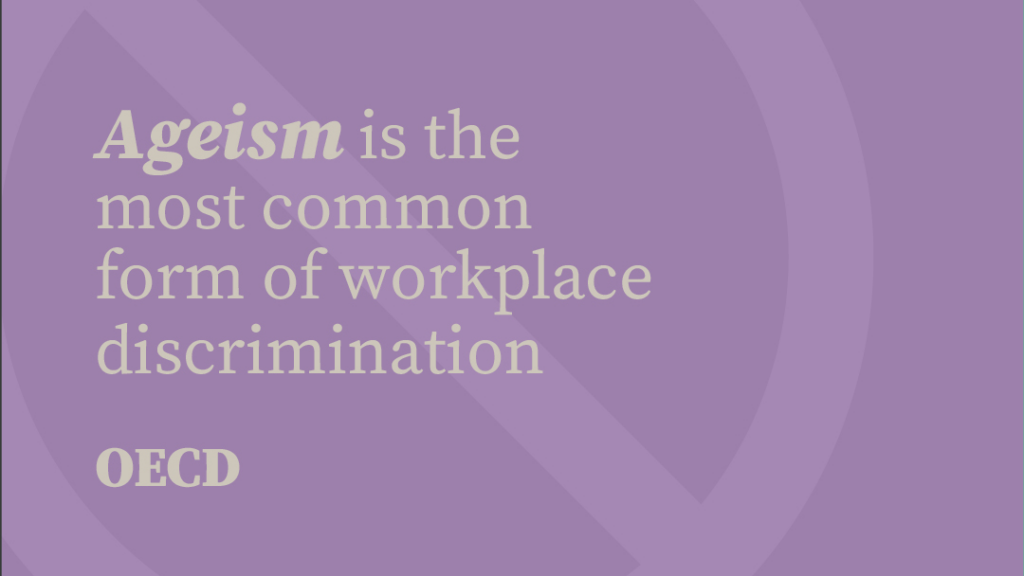
Organisations need to avoid blanket expectations for any generation. We discussed how all generations seek meaningful purposeful work and are now looking for greater flexibility, whether for a better lifestyle or caregiving responsibilities. Leaders and managers need to have human conversations on an individual level to discover what is motivating and hindering employees regardless of their age, and to address these needs.
Supporting Gen Z in the workplace
Sophie shared her experiences supporting Gen Z, who are now entering the workforce and looking to be heard. Gen Zers are often feeling frustrated from being stereotyped as lazy, entitled, and with short attention spans. Instead, Sophie’s experience has found a generation of researchers and multitaskers, who value productivity, are seeking better communication from their employers, and want the opportunity to contribute their ideas.
Organisations need to communicate clearly about where and how Gen Z employees can add value. We need to get better at listening to their ideas and providing opportunities for them to voice their opinions. We know that increased hybrid and remote working may be limiting the access of Gen Z to development opportunities, so mentorship and clear communication guidelines are essential.
Supporting older generations in the workplace
With around one in three UK workers aged 50+, older workers are the fastest-growing employment group. Organisations must learn to better recruit and retain older workers, who often face misconceptions about their flexibility, digital skills, and career trajectory. Ageism is all too often impacting older workers’ access to training and advancement, while bias and age discrimination is being internalised, leading to a lack of self-confidence.
Older workers want to be valued for their experience and knowledge and to be part of the inter-generational exchange. They are seeking flexibility, perhaps to manage health issues or caregiving responsibilities, but also for a better work/life balance. By addressing these needs and creating an inclusive culture that supports older workers, businesses can benefit from their valuable expertise and contributions.
Promoting better inter-generational communication
Effective communication is vital for building relationships, enhancing productivity, and creating successful companies. Whereas poor communication kills culture, erodes trust, and harms businesses. There is a generational communication challenge, as the etiquette of professional communications has evolved. It’s now essential to navigate the variety of different communication channels available without leaving anyone behind.
During the meeting, we discussed the following strategies to improve multi-generational communications:
Establishing clear communication guidelines
Organisations should establish clear communication norms and expectations to ensure everyone is on the same page. This would include guidance on:
- When an audit trail is required for formal communications
- When informal channels like instant messaging are appropriate
- Expected response times across different communication modes
While overarching guidelines are important, teams should also have the flexibility to determine the specific tools and styles that work best for their needs and dynamics.
Promoting cross-generational learning
Skill-sharing across generations could be highly beneficial for fostering effective communication. For example:
- Older workers can share their expertise on meeting etiquette, professional writing, and interpersonal communication skills.
- Younger employees can introduce and train their colleagues on newer communication tools, platforms, and best practices.
This sharing of knowledge not only improves communication but also promotes collaboration and understanding between different age groups.
Adapting communication styles
It’s important to recognize that communication formalities and response time expectations may differ across generations, potentially leading to misunderstandings.
- Communicators should adapt communication styles to the recipient’s preferences, rather than expecting everyone to conform to a one-size-fits-all approach.
- It will likely be a process of trial and error to find the right communication culture that works for each team and the business as a whole.
Effective communication is an art that requires intentionality and adaptability, especially in a multi-generational workforce. Businesses must take on the challenge of tailoring their communication approaches to meet the diverse needs and preferences of their employees.
Fostering multi-generational collaboration and enhancing productivity
We can’t sleepwalk into a cohesive multi-generation workforce, and it will require efforts beyond HR and DEI teams, with senior leaders across the business needed to make a meaningful change.
To enhance collaboration and boost productivity across generations, several strategies were discussed:
Engaging in meaningful conversations
Businesses need to go beyond surface-level staff satisfaction surveys and engage in deeper conversations with employees from different generations. Leaders need to actively listen to understand the issues and unique needs of each age group.
Managers should consider conducting structured career discussions to gain insights into individual goals, aspirations, and challenges. This open dialogue can help tailor support and development opportunities to better meet the diverse needs of a multi-generational workforce.
Flattening hierarchies and empowering all voices
One recurring topic was the challenge posed by traditional hierarchical structures. Companies that foster a more collaborative and inclusive culture often have flatter organisational structures, enabling better multi-generational collaboration.
In such businesses, there are opportunities for all employees, regardless of age or experience level, to contribute their ideas and perspectives meaningfully. Processes should be in place to ensure that every voice is heard and valued, promoting a sense of belonging and engagement across generations.
Redefining career paths
Traditional career paths often follow a hierarchical progression, which may not align with the evolving needs and aspirations of a multi-generational workforce. Businesses should explore ways to create alternative career paths that allow for more flexibility. For example, experienced workers nearing the end of their careers could transition into roles that leverage their expertise and knowledge, while stepping away from full-time, high-pressure roles. This approach not only retains valuable institutional knowledge but also empowers these employees to continue making meaningful contributions.
By nurturing a culture that values all generations’ perspectives and focuses on common goals like meaningful work and business success, organisations can foster collaboration among their multi-generational workforce. This, in turn, can boost productivity and drive innovation.
Uniting the multi-generational workforce
Bridging the generational divide requires a multi-faceted approach – dismantling harmful stereotypes, supporting the unique needs of different age groups, fostering open and inclusive communication, and actively promoting collaboration across generations.
While sensationalised generational rhetoric may attract attention and clicks, it is unhelpful and encourages an exaggeration of differences between generations. Instead, we need to focus on what unites the workforce – the shared desire for meaningful work, growth opportunities, work-life balance, and a sense of purpose.
We’re passionate about making workplaces fairer, healthier and happier for all through better communications. If you’re ready to make an impact on your workplace culture, get in touch to see how we can help you create a more collaborative, productive, and successful multi-generational workforce.
Watch the video: Uniting the multi-generational workforce
Bridging the generation gap: insights on climate change and sustainability
By Sally Pritchett
CEO
Climate change is arguably the defining issue of our time. But how do people from different generations perceive this threat?
One of the key challenges we hear about from our community of communicators is how to effectively talk about sustainability. Many are concerned about falling into corporate washing or greenwashing traps, while others are unsure how to make their communications resonate with their audiences without resorting to doom-and-gloom narratives that risk spiralling into negativity and anxiety.
As workplaces become increasingly multi-generational, a new challenge also arises. Those who have grown up with a constant awareness of the need for societal change to tackle the climate threat are now working alongside those who only discovered the impact of poor natural resource management and the resulting climate crisis in their later years. It’s reasonable to expect that these different generations have very different perspectives on sustainability issues, and therefore, our communication strategies may need to be tailored accordingly.
Commonly held stereotypes suggest that Gen Z and Millennials are highly concerned about the environment and willing to make sacrifices for sustainability. In contrast, Gen X is perceived as less engaged with the issue and cynical about the capability for large-scale change. Meanwhile, Baby Boomers and Traditionalists are often stereotyped as not taking climate change seriously, or perhaps not even believing the science, prioritising economic growth over environmental concerns. If these stereotypes were true, how could we bring these different perspectives together and align a multi-generational workforce on a single company-wide mission towards a more sustainable future?
However, we know that stereotypes are often inaccurate, so to test these ideas we surveyed and interviewed individuals across the generations. Our research explores generational perspectives on sustainability and climate change. Understanding these nuances can help us as communicators to bridge the gap and inspire collective action.
So, how do different generations truly view sustainability, the climate crisis, and their influence around it? Let’s find out…
Generational perspectives on climate change and sustainability
Traditionalists
“I would say I am anxious for my children, grandchildren and great-grandchild.”
- Born before 1945, Traditionalists are aged 79 and older.
- They make up approximately 5-10% of the current workforce.
- On average, Traditionalists report becoming aware of the importance of the environment and the reality of climate change in their 50s.
- On a scale of 1-10, they rate their anxiety level around climate change as 7. This is the lowest rating, tied with Gen X and Gen Z.
- They believe the main causes of climate change are industry and transport emissions.
- Their top action to reduce climate change in the next decade is lowering emissions from transport, such as adopting electric vehicles.
- They felt that their generation could have recycled more and better-protected forests and other natural resources.
- Traditionalists didn’t use the terms ‘carbon’ or ’emissions’ and instead talked about pollution.
Baby Boomers
“I don’t think about [climate change] all the time. But it does make me anxious, not for me, but for my children and their children. The powers that be need to do something.”
- Born between 1946 and 1964, Baby Boomers are currently aged 60-78 years old.
- They make up approximately 30-40% of the current workforce.
- On average, Baby Boomers report becoming aware of the reality of climate change in their early 30s.
- Among all generations, they reported the highest levels of climate anxiety, rating themselves an 8 on a scale of 1-10.
- They identified the main causes of climate change as human nature and greed, an overreliance on fossil fuels, and high levels of industrial emissions.
- Their top actions to combat climate change are reducing or eliminating fossil fuel use and transforming transportation systems, such as electrifying vehicles, using biofuels, and improving public transport.
- When asked what their generation could have done differently to protect our planet, respondents were nearly unanimous in wishing for better education, and that industry and government should have listened to science and acted much more quickly.
“We were encouraged to try to do everything – gain an education, build a career, look after a family, travel, and more – all while it was still primarily the responsibility of women to manage these roles. It was nearly impossible to achieve all these things without relying on items that made this load easier, leading to a preference for convenience.”
Gen X
“We needed more education earlier about the environmental damage from our actions. We also inherited an oil/car-dependent culture.”
- Born between 1965 and 1976, Gen Xers are currently aged 48-59 years old.
- They make up approximately 35-40% of the workforce.
- On average, Gen Xers report becoming aware of the importance of the environment and the reality of climate change in their early 30s. However, there was a wide range, with some reporting learning in childhood or their teens, and others not until recent years when in their 50s.
- On a scale of 1-10, the average anxiety level is 7 (tied for the lowest with Traditionalists and Gen Z).
- Human nature and greed were clearly identified as the main causes of climate change. However, this age group included the largest number of respondents who did not believe in or overtly question the human impact on climate change.
- To reduce climate change in the next decade, they cited the reduction or ban of plastics, reducing reliance on fossil fuels, and decreasing consumer consumption as the most important actions.
- When asked what their generation could have done differently, they suggested that better education around climate change would have enabled and encouraged faster action.
“I’m very glad I don’t have children to hand this planet to – the guilt would be too much!”
Millennials
“No matter how much effort I make as an individual, it is a drop in the ocean compared to big polluters. It makes me feel hopeless and powerless.”
- Born between 1977 and 1995, Millennials are currently aged between 29-47 years old.
- They make up approximately 30-35% of the workforce.
- On average, Millennials report becoming aware of the importance of the environment and the reality of climate change in their early teens, though many reported learning about it as small children or felt that they grew up always knowing about it. This shows that it’s not just the youngest generations who grew up with the looming reality of climate change, but many Millennials who are now reaching middle-age, feel that they did too.
- On a scale of 1-10, their average anxiety level is 7.7, this is the second highest, just slightly lower than that of Baby Boomers.
- Millennials overwhelmingly cited callous human greed and selfishness as the main causes of climate change. Industry and government inaction were also common responses.
- To reduce climate change in the next decade, Millennials largely called for better support for renewable or green energy and a reduction in consumer consumption. There were also strong calls for governments to toughen up on industry by enacting stronger regulations, fines, and sanctions for those that resist change.
- When asked what their generation could have done differently, Millennials reported wishing they had acted sooner, through voting, speaking up, educating others, and protesting. There is also a clear sentiment of a feeling of powerlessness and believing that older generations still hold the capability to enact significant change.
- While Millennials wish they had acted sooner and sometimes feel powerless, they haven’t given up on finding solutions to the climate crisis. This generation proposed the widest variety of ideas to tackle climate change, including supporting green financing, renewable energy development, carbon capture technologies, and reducing consumption. Despite the challenge ahead of them, their determination to tackle this issue remains strong.
“We need to find a way to make people understand how it affects them personally otherwise they don’t care, frankly.”
Gen Z
“My generation are waking up to the long-term issues and hopefully will push for change in the future.”
- Born between 1996 and 2015, Gen Z is currently aged 9-28 years old.
- They make up a small percentage of the workforce, but this is set to rise to 30% by 2030.
- On average, Gen Zers report becoming aware of the importance of the environment and the reality of climate change at age 10, with many respondents citing learning about it in their early years of schooling.
- On a scale of 1-10, their average anxiety level is 7. Despite often being thought of as the most ‘anxious’ generation – they reported among the lowest levels of anxiety, tied with Traditionalists and Gen X.
- They identified the main causes of climate change as people’s lack of willingness to change and a lack of respect for our planet, as well as our heavy reliance on fossil fuels.
- To reduce climate change in the next decade, they called for investment and development in new green energy solutions and reducing or stopping the manufacture of plastic, particularly single-use plastics.
- When asked what their generation could have done differently, Gen Z respondents suggested that they needed to learn more about climate change and consume less.
- Contrary to stereotypes, Gen Z did not emerge as the activist generation in our research. Instead, were the most vocal about protesting and driving revolutionary change to address climate issues.
“I can’t have that much impact on it [climate change] or control over it so I try not to worry about it too much, plus lots of adults don’t seem to be that worried about it.”
How to communicate about sustainability issues across the generations
Our research shows commonalities and differences in how different generations view the climate crisis and sustainability issues. While high levels of anxiety cut across age groups, perspectives on causes, solutions, and personal control vary. To inspire collective action, communicators must move beyond stereotypes and tailor communications that reach across the five generations.
Avoid stereotyping and acknowledge shared concerns
Our findings show high levels of climate anxiety across all generations, contrary to stereotypes that older cohorts are apathetic or unaware. Gen Xers displayed the widest range of views, from deep concern to outright denial. Be prepared to address varying levels of awareness and scepticism.
Use familiar, relatable language
Avoid overly technical jargon. Within our respondents, Traditionalists did not use terms like “carbon” or “emissions”, preferring words like “pollution”. Tailor your language to resonate across all the generation’s lived experiences and understanding of climate change.
Prioritise education and awareness
Baby Boomers were nearly unanimous in wishing for better education, and many Gen Xers regretted not receiving better environmental education earlier in life. Gen Zers said they needed to learn more about climate change. Develop targeted campaigns to help fill knowledge gaps and address misconceptions.
Highlight actions they can take in their daily lives
Traditionalists feel their generation could have done more to recycle and protect natural resources. Gen X, Millennials and Gen Z all reported that they need to reduce consumer consumption. Emphasise practical steps that can be taken now.
Empower them to drive change within their spheres of influence
Despite reporting a feeling of powerlessness, Millennials have not given up and continue proposing solutions like green financing and carbon capture. Emphasise their ability to be changemakers by supporting and amplifying these solution-oriented mindsets. While some Millennials feel powerless against older generations, remind them of their collective voice and ability to influence through their roles as employees, consumers and advocates.
Read more
We’re raising our voice on multi-generational workforces, helping you to understand the challenges and opportunities a multi-generational workforce presents and how your business can create an inclusive workplace for #GenerationAll.
Bridging generational divides for collective climate action
While generational divides on climate change can make for attention-grabbing headlines, our research shows there is more that unites us than divides us. When Time magazine named Greta Thunberg their Person of the Year in 2019, they called her a “standard bearer in a generational battle, an avatar of youth activists across the globe.” However, exaggerating these generational differences is at best unhelpful, and at worst, dangerous.
Our findings clearly show that climate anxiety cuts across the generations, dispelling stereotypes of older generations being apathetic or unaware. Traditionalists and Baby Boomers alike express deep concerns about the planet’s future, often rooted in worries for their children and grandchildren. Meanwhile, younger cohorts like Millennials and Gen Z remain determined to find solutions, despite sometimes feeling powerless against entrenched systems and inaction.
Effective communications must move beyond what divides the generations and instead bring people together around shared values and a collective sense of responsibility. Rather than continuing divisive narratives, we need to amplify the positive stories that inspire change, continue prioritising education to bridge knowledge gaps, and tailor our messaging to resonate with each generation’s lived experiences.
Stereotypes are not only inaccurate but counterproductive in rallying a unified front against the climate crisis. By acknowledging our common anxieties, proposing tangible actions, and empowering all generations to drive change within their realms, we can harness the power of our diversity and work towards a more sustainable future for all.
About the data
This article is based on data collected from a total of 90 respondents through a combination of 63 online surveys and 27 conducted interviews by Something Big employees. The data collection period spanned from April to May 2024. The survey was shared by Something Big team members via public social channels, across business communities and through personal relationships. The demographics and backgrounds of respondents are varied; however, they will be influenced by the network and connections that exist around our business.
The respondents were categorized into five generational groups as follows:
- Traditionalists (79+): 7.78%
- Baby Boomers (60-78): 14.44%
- Gen X (48-59): 31.11%
- Millennials (29-47): 27.78%
- Gen Z (9-28): 18.89%
The gender distribution among the respondents was recorded as:
- Woman: 50%
- Man: 24.44%
- Genderfluid/Genderqueer: 1.11%
- Non-binary: 0%
- Prefer not to answer: 0%
- Unknown / not recorded: 24.44%

